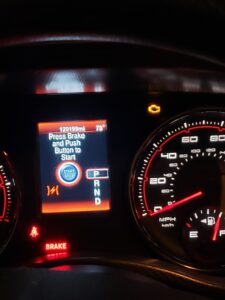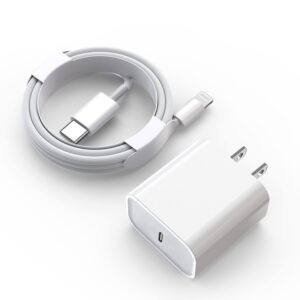Curious to know how much battery acid is in a car battery? Well, I’ve got you covered! Understanding the amount of battery acid in your car battery is essential for maintaining its performance and longevity. In this article, we’ll delve into this topic in a conversational manner, ensuring you grasp the concept without getting lost in technical jargon. So if you’ve ever wondered about the quantity of battery acid in a car battery, stay tuned as we uncover this vital piece of information! Let’s get started.
How Much Battery Acid is in a Car Battery?
Car batteries are an essential component of any vehicle’s electrical system. They provide the power required to start the engine, operate the lights, and run various other electrical components in the car. Understanding the inner workings of a car battery, including the amount of battery acid it contains, is crucial for maintaining and prolonging its lifespan.
Understanding Car Battery Acid
Car battery acid, also known as electrolyte, is a mixture of water and sulfuric acid. It is a highly corrosive substance that plays a vital role in the battery’s operation. The acid facilitates the chemical reactions necessary to generate electrical energy and helps in storing and releasing it when needed.
Typical Acid Volume in a Car Battery
The volume of battery acid in a car battery varies depending on the battery size and type. Most conventional car batteries, known as flooded or wet cell batteries, contain around 1.25 to 2 liters (42 to 67 ounces) of battery acid. This amount is distributed equally among the individual cells inside the battery.
Each cell in a car battery consists of a series of lead plates submerged in the electrolyte solution. The electrolyte level in each cell should ideally cover the top of the plates to ensure efficient operation and prevent damage to the battery.
How Battery Acid Levels Change
Over time, the water component in the battery acid can evaporate, leading to a decrease in the overall level of the electrolyte. This evaporation process is accelerated in hot climates or due to overcharging the battery. Consequently, the acid concentration can become imbalanced, affecting the battery’s performance and longevity.
To counteract this, it is essential to regularly check the electrolyte levels in your car battery and add distilled water as needed. Ensuring the right balance of battery acid and water is crucial for the battery’s optimal functioning and lifespan.
The Importance of Battery Acid Levels
Maintaining the correct level of battery acid is vital for the overall health and performance of your car battery. Here are a few reasons why:
1. Efficient Electrical Energy Generation: Battery acid enables the chemical reactions necessary for electricity production. The right acid levels ensure the battery’s ability to generate sufficient power to start the engine and power the vehicle’s electrical systems.
2. Preventing Plate Damage: Insufficient battery acid can lead to the exposure of lead plates, which compromises their integrity. Over time, this can result in plate corrosion and reduce the battery’s capacity to hold a charge.
3. Preventing Overheating: The acid in a car battery helps regulate its temperature by absorbing excess heat. Insufficient acid levels can lead to overheating, damaging the battery and potentially causing it to fail.
4. Avoiding Sulfation: Sulfation occurs when the battery’s lead plates become coated with lead sulfate crystals. Proper acid levels prevent this buildup, ensuring better battery performance and extending its lifespan.
Tips for Checking and Maintaining Battery Acid Levels
Regularly inspecting and maintaining the levels of battery acid in your car battery is crucial. Here are some steps you can take to ensure optimal acid levels:
1. Safety Precautions: Before inspecting the battery, ensure you are wearing appropriate safety gear, such as gloves and eye protection, as battery acid is corrosive.
2. Visual Inspection: Check if the electrolyte level is above the top of the lead plates in each cell of the battery. If the level is low, you may need to add distilled water to bring it up to the recommended level.
3. Adding Distilled Water: If the electrolyte level is low, carefully add distilled water to each cell until it reaches the optimal level. Avoid overfilling, as it can cause electrolyte overflow during charging.
4. Avoid Tap Water: It is crucial to use distilled water rather than tap water when topping up the battery acid. Tap water contains impurities and minerals that can affect the battery’s performance and lifespan.
5. Equalizing Charge: If you have added water to your battery, it is advisable to perform an equalizing charge to ensure proper mixing of the electrolyte. This charge helps prevent stratification and ensures even distribution of the acid-water mixture.
6. Regular Maintenance: Make it a habit to check your battery’s acid levels periodically, especially during extreme weather conditions or after long periods of inactivity. This practice will help identify any potential issues and allow you to take corrective measures in a timely manner.
Understanding the importance of battery acid levels in a car battery is crucial for ensuring optimal performance and longevity. By regularly inspecting and maintaining the correct acid levels, you can prolong the life of your car battery and avoid potential issues like plate damage and overheating. Remember to handle battery acid with care and always follow recommended safety precautions.
Frequently Asked Questions
How much battery acid is in a car battery?
Car batteries contain a mixture of sulfuric acid and distilled water, commonly known as battery acid. The acid makes up a significant portion of the battery’s overall composition, typically constituting around 30-35% of the electrolyte solution.
What happens if the battery acid level is too low?
If the battery acid level is low, it can lead to decreased performance and potential damage to the battery. Insufficient acid can result in reduced electrical conductivity and a weaker charge, ultimately affecting the battery’s ability to start the car.
Can the battery acid level be topped up?
Yes, if the acid level in the battery drops below the recommended range, you can top it up with distilled water. However, it is essential to use caution and avoid overfilling, as it can lead to electrolyte overflow during charging, creating potential hazards.
How can I check the battery acid level in my car battery?
To check the battery acid level, you will need to remove the cell caps located on top of the battery. Use a flashlight to inspect the electrolyte solution’s level inside each cell. If the level is below the recommended mark, it is advisable to add distilled water carefully.
What precautions should I take when handling battery acid?
When handling battery acid, it is vital to wear protective equipment, such as gloves and safety goggles, to minimize the risk of burns or eye damage. Avoid smoking, open flames, or sparks in the vicinity, as battery acid is highly corrosive and flammable. Additionally, always work in a well-ventilated area to avoid inhaling any fumes.
Can I dispose of old battery acid?
Due to its corrosive nature, battery acid must be handled and disposed of properly. It is recommended to take old battery acid to a recycling center or a designated hazardous waste facility in your area. Do not pour it down the drain or dispose of it with regular household waste.
Final Thoughts
The amount of battery acid in a car battery varies depending on the size and type of the battery. Generally, a car battery contains around 2-3 liters of battery acid, which is a mixture of sulfuric acid and distilled water. This acid is crucial for the battery’s functionality, as it facilitates the chemical reactions that generate electricity. It is important to handle battery acid with caution, as it can be corrosive and harmful. Therefore, when dealing with a car battery, it is essential to follow safety precautions and use protective gear to prevent any accidents or injuries related to battery acid. Overall, understanding how much battery acid is in a car battery is important for maintaining and caring for your vehicle’s electrical system.



